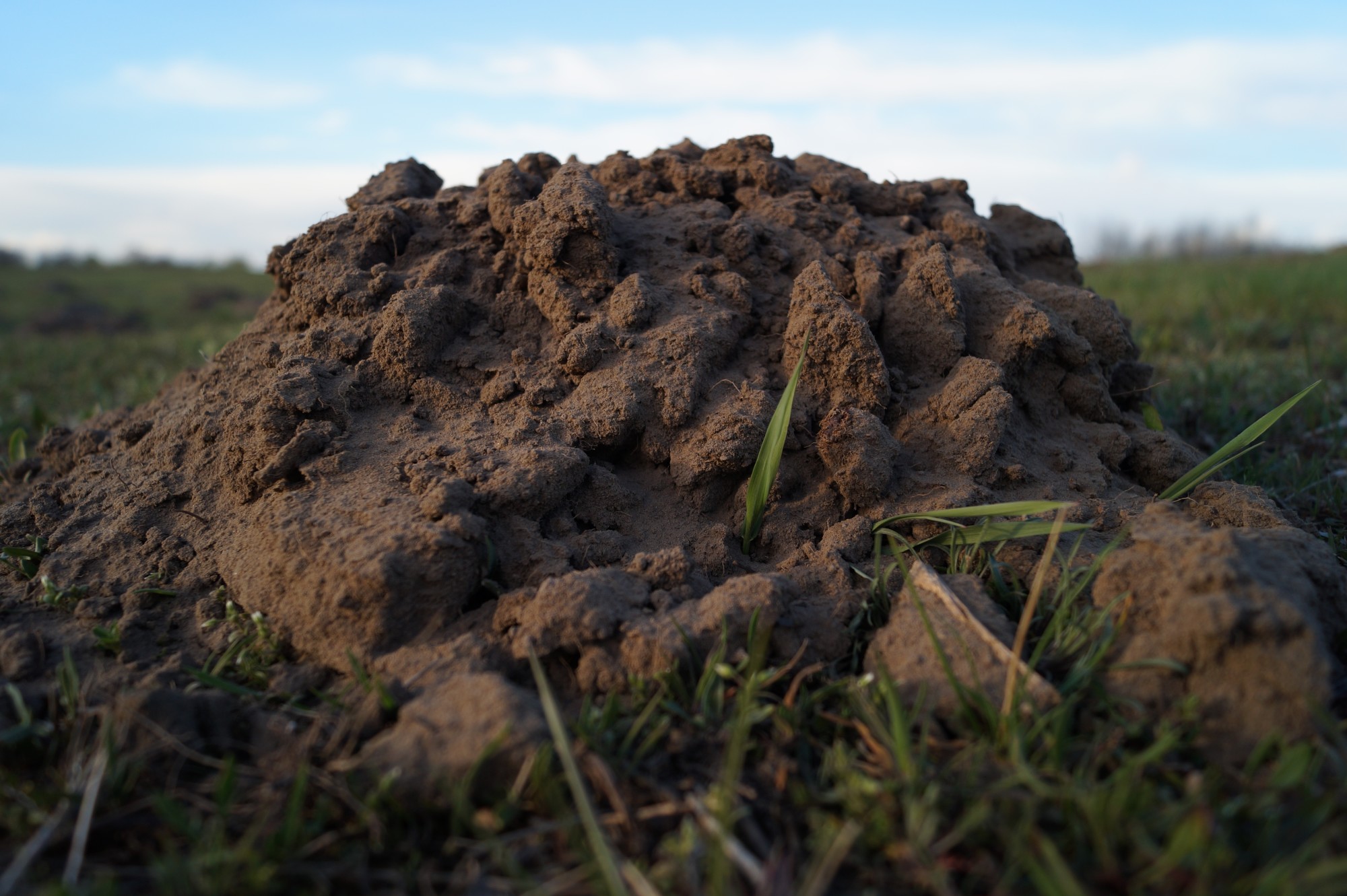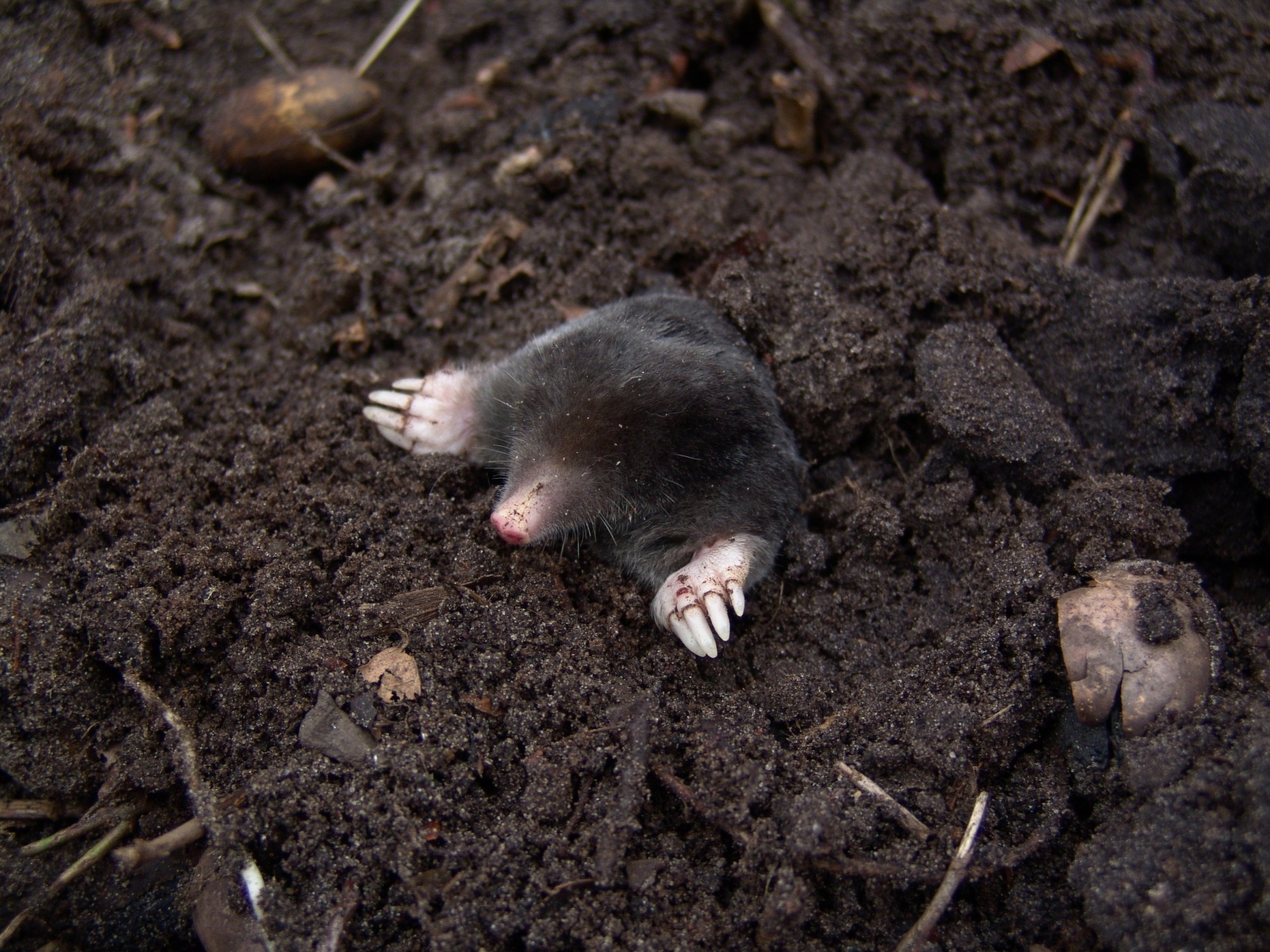If a mole is in your yard, they can dig a hole that is about 2 inches in diameter and up to 12 inches below the surface.
Once they’ve started digging holes in your yard, it’ll be very hard to get rid of them as your yard just keeps getting torn up more and more.
So how do you get rid of them? We have some of the best tips on how to get rid of ground moles, so make sure you keep reading!
1. Don’t Give Them a Great Environment to Thrive
One of the main reasons that moles get into your yard in the first place is because you created an environment that they love.
To avoid that, you’ll need to make sure you don’t have a lot of bugs in your yard. Moles love insects and grubs, and it’s their main source of food. But if there are no bugs, they aren’t likely to want to go into your yard in the first place.
You should also try and not to overwater your lawn. Earthworms love saturated water, which can also draw in one of the mole’s favorite meals.
2. Use a Repellent
If those preventative measures don’t work, you can always use a repellant to deter them as well.
Castor oil is a great repellant, and it won’t harm them. If they eat it, it will give them an upset stomach, so it will make them not want to live in your yard.
To use this as an effective strategy, mix castor oil with some dish soap, and add it to a gallon of water. You can pour this over your yard, but if you already have moles, you can pour it in their home as well to help evict them.
There are also pellets or sprays that you can buy at your local home goods store that will help keep them out. However, these can sometimes be harmful to the moles and your family or yard.
3. Set Out Mole Traps
If you do have moles despite the preventative measure, you can set out some mole traps. Some of the best traps are the spring-loaded snares. You can buy some of these on Amazon, and they’re pretty easy to use.
If you get them, you can put them directly into the mole’s tunnel. Make sure that it’s a tunnel they often go into so that they don’t go around it. It can be hard to check if the trap caught them, but normally if the top of the tunnel isn’t fresh, the trap worked.
While you might catch one mole, there could be a few more that are still hiding in the tunnels. To fully get rid of your mole problem, you’ll have to catch and trap them all. This can be a long process, but if you keep up with it, it can be effective.
However, before you start laying traps, make sure you check with your state’s laws. Some states make it illegal to trap them, which means that you’ll have to find another way to remove them.
4. Call an Exterminator
If you don’t feel comfortable getting rid of the mole yourself, you can always call a professional come help you.
They have experience in getting rid of moles, and they’ll know exactly what works and what doesn’t. Plus, you’ll be able to rest easy and devote your time and energy elsewhere.
5. Remove the Mole Yourself
If you don’t want to pay for a professional, you can always try and remove the mole on your own. Besides the traps, there are a few ways to remove the mole without killing it.
If you have a bunch of mole holes out in your yard, you’ll need three shovels when you go out to investigate them. You’ll also need a lot of patience.
First, you’ll have to take the back of a shovel and flatten out one of the hills that you’ve found. The mole will be able to smell or hear you, so make sure you step away from the shovel after you’ve placed it over the hill. This will make the mole comfortable enough to show itself.
Wait patiently until you see it start to move the soil. It will try to repair the hill that you covered and move your shovel. Once you see it start to move, you can run to the area and put the shovels in the ground to try and grab the mole.
Once you have the mole, put it into a cardboard box and take it somewhere far away from your property.
6. Use Natural Barriers
Lastly, you could try and use natural barriers as well to help deter them.
For example, a lot of them don’t like the smell of marigolds, daffodils, or other flowers in the allium family. This makes it a safe barrier to keep moles out, but it also won’t harm your children or pets.
Plus, it can make your landscape look really great and colorful!
If you don’t want those flowers, there are also barriers you can purchase that are made to keep moles out. They are like a basket, and you can place them around your other plants to stop them from being eaten by the moles.
Discover More on How to Get Rid of Ground Moles
If you’re still wondering how to get rid of ground moles, there are still a few more methods that you could try.
However, if none of these have worked, it might be time to call a professional. Thankfully, we’re here to help you!
If you’re having problems with ground moles, make sure you contact us today!




